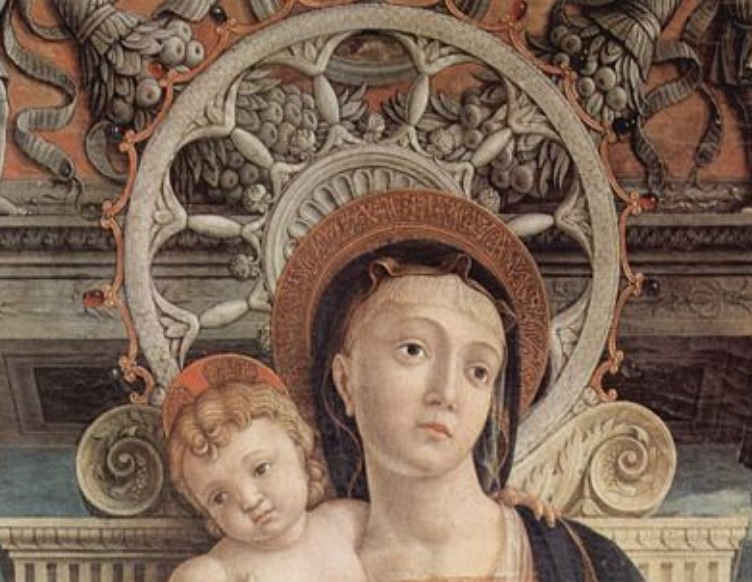December 16, 2020
Year 1457: Andrea Mantegna ends a 2- year long work for a new altarpiece in the basilica of San Zeno in Verona. It is a revolutionary piece of art that provokes a kind of shock in the local artistic milieu: nobody has ever seen such a modern treatment of colors, perspective, volumes, composition, in such a large size. It's like a painted symphony.
Year 1797: Napoleon Bonaparte, during the Italian campaign, robs the altarpiece and brings it to Paris.
In the first years of the XIX century, at the fall of Napoleon, the painting is taken back to Verona and replaced on the altar of the church. Since then, the elegant Madonna and Child with her court of 8 saints and many chanting angels, sits sumptuous and solemn on the altar of the San Zeno church.
Each time we admire an altarpiece in a museum, we should consider that we see it detached from its original environment and out of context. Those pieces of art were site- specific, i.e. conceived for a space and in interaction with the original location. This is luckily not the case of the stunning pala of San Zeno, where the connectors are still working and existing.
Let us see a couple of examples of this mutual exchange between the painting and the architectural spaces of the church:
The light
Only standing in the apse of San Zeno church, you are able to see that the inner source of light painted by Mantegna comes from the right- hand side exactly as the real light, that filters from an actual window open in the right wall of the church. The virtual light inside the painting actually replicates the real light on the altar!
The Virgin halo
Behind the Virgin’s head (and behind her golden halo), Mantegna paints an exact replica of the church rose window. This is a very strong connector of the painting to the site, a very easy connection to do once you are in the church.
These and other more subtle interactions between the art and its container are very evident once you are on site. Moreover:
-the quality of the colors (coral red, bright yellow, intense blue)
-the elegance of the gold-and-blu wooden frame
-the majestic allure of the characters
-the surprising balance between the Renaissance art and the Gothic architectural counterpart
are only appreciated in person, with all your 5 senses and allowing you the time to move your body in that space.
You’ll suffer from the Stendhal Syndrome for sure!
If you are an art lover and wish to see the altarpiece of Andrea Mantegna in the Basilica of San Zeno with us, the right tour is our Comprehensive Tour of Verona










